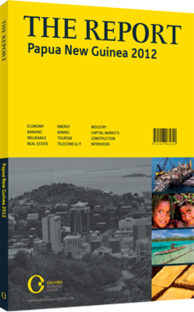OBG talks to Peter M Graham, Managing Director, Esso Highlands, subsidiary of ExxonMobil

Interview: Peter M Graham
How is the completion of the final construction phase of ExxonMobil’s PNG liquefied natural gas (LNG) project progressing?
PETER M GRAHAM: According to the schedule we set out when the project was appropriated, we are on time for delivering the first LNG in 2014. To give you our progressive milestones that have been achieved so far, the project is in its third year of construction, and 2012 is our peak year of construction activity. The project is just over 50% complete and currently employs 16,000 workers.
Much progress has been made at the LNG plant site. The laying of a 407-km subsea offshore pipeline will be finished by mid-June 2012. Moreover, substantial progress has been made in the laying of the onshore pipeline. More than half of this almost 300-km pipeline is welded, of which around 140 km is already buried. The construction of the rest of the onshore pipeline will arguably be more challenging as we move through increasingly difficult terrain. When completed, some 700 km of pipeline will connect all the PNG LNG facilities.
It is encouraging that the government for its part has worked diligently to meet all of our operational deadlines. It is quite remarkable considering the size of the project. This is a once-in-a-lifetime project that will have a demonstrable impact on the lives of people throughout the country.
In your opinion, how does PNG LNG compare with other projects in ExxonMobil’s portfolio?
GRAHAM: This is among the largest and most complex projects in ExxonMobil’s global portfolio. It has the largest private financing in the history of the oil and gas industry, with $14bn raised during the height of the global financial crisis, which was a special achievement in itself. Whereas most projects face just a few key challenges, our project faces numerous physical and social challenges. Steep and swampy terrain and heavy rainfall are features of PNG, while seismic activity as well as relatively complex social structures have also created significant challenges.
However, we are successfully working through them to deliver the project on schedule.
How has the decline in LNG prices affected the long-term strategic approach of ExxonMobil both globally and for PNG?
GRAHAM: It is largely a matter of supply. If we look at the recent developments in the US in shale gas, for example, the US has turned from an LNG importer into a possible exporter. From an economic investment perspective, we approach a project like this with a longterm view. This kind of project has a lifespan of around 30-40 years – our risk assessments are done over a 40-year horizon, during which we test a range of pricing and other possible risk scenarios. For PNG LNG, all of our LNG sales contracts have been signed and the gas committed. This is a significant achievement.
What role will LNG technology have to play in meeting energy demand worldwide, and what are the likely ramifications of the emergence of such technology on energy supplies?
GRAHAM: What is driving the demand for energy is the growth of global GDP and the rise in the quality of people’s lives. Gas is becoming a significant contributor to energy consumption. It has a number of attributes that make it very attractive: it is affordable, cleaner compared to other fossil fuels and is abundant in supply. We are seeing rapid growth in natural gas, and LNG in particular, across the world.
Currently, LNG represents 5-6% of natural gas supplies and is continuing to grow. By 2040, we forecast that LNG will supply about 15% of gas demand. PNG is in an excellent location to serve the Asian markets.
For the foreseeable future, conventional energy sources, including LNG, will be major contributors to meet the demand for energy. Alternative energy use will also increase, but this will take some time.
You have reached the limit of premium articles you can view for free.
Choose from the options below to purchase print or digital editions of our Reports. You can also purchase a website subscription giving you unlimited access to all of our Reports online for 12 months.
If you have already purchased this Report or have a website subscription, please login to continue.

